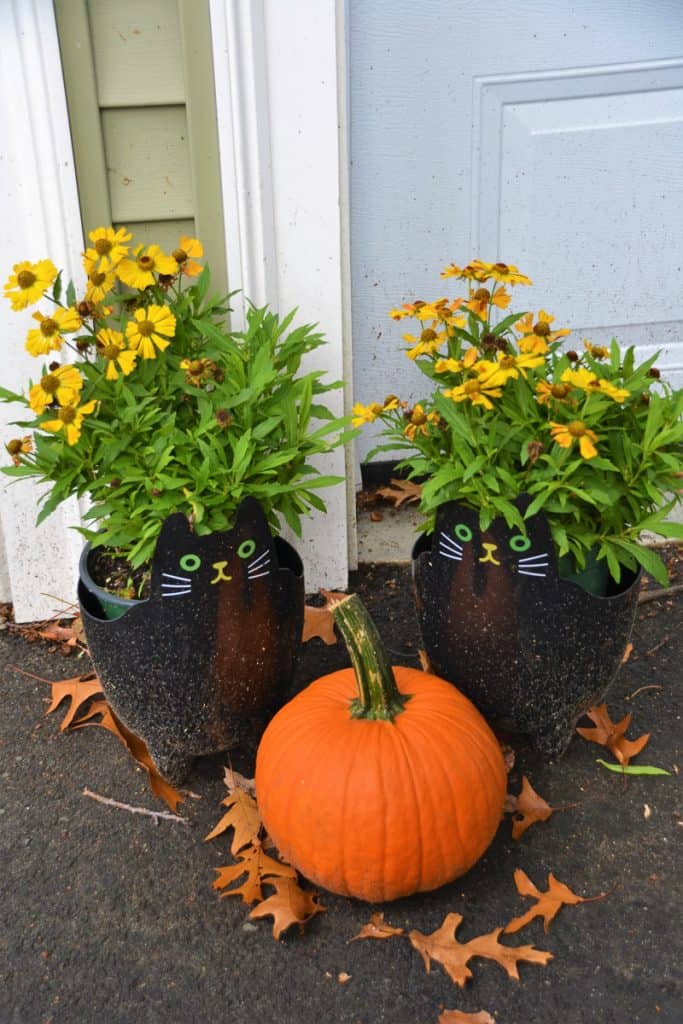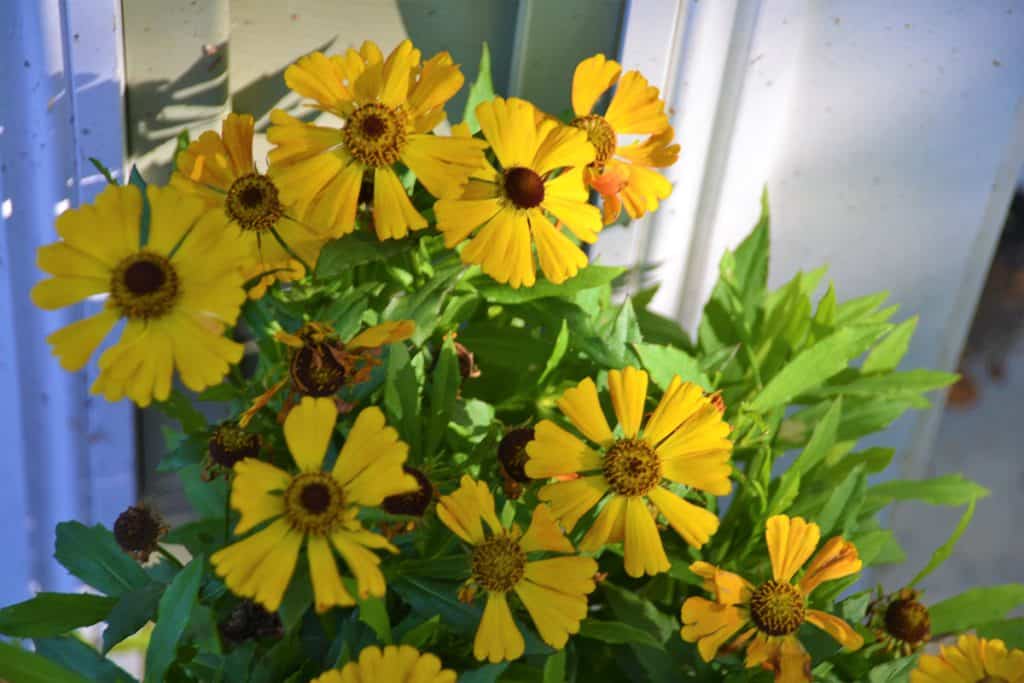Here’s what’s blooming in town this week to make your walks more enjoyable
While we are at the peak of fall color for our area, some trees are still green and will not be losing their foliage for another several weeks. The invasive exotic species Norway maple (Acer platanoides) is still mostly green although two of our most common native maples, red maple (Acer rubrum) and sugar maple (Acer saccharum), are in blazing color right now. Hickory, especially shagbark hickory (Carya ovata), is another native tree which is in full golden glory. Still to come are willows (Salix spp.), pears (Pyrus spp.) and most oaks. If you have not gone leaf-peeping further north this season, be sure to get out and enjoy the foliage all around you. In coastal Connecticut and Rhode Island, peak color may be still a week or so away.
Even as leaves are dropping, we have quite a few flowers just coming into bloom. Some of my hardy mums planted a year or so ago are just starting to open. Montauk daisies (Nipponanthemum nipponicum) are near their peak of bloom, and the first buds of Cambodian Queen mum (Dendranthemum ‘Cambodian Queen’) just opened up this week. Our native witch hazel (Hamamelis virginiana) is blooming at Breakheart, but most people will not notice until the leaves fall in a few weeks and the small yellow flowers are left alone on the branches.
One native perennial species which deserves to be used more often is sneezeweed or Helen’s flower (Helenium autumnale). Flowers may be yellow, orange or reddish. While wild plants can grow as much as 5′ tall, breeders have in recent years produced some shorter plants to fit in garden locations other than the “back of the border” locations that the taller varieties need. This species is widespread across most of the United States although not often seen wild in New England. It is a long bloomer, often flowering into November. Flowers are attractive to butterflies and other pollinators, and the seeds in late fall and winter provide food for many birds.
Sneezeweed’s common name might lead you to think it was a major cause of hay fever, but its origin is very different. At one time dried leaves from this plant were used in snuff, the use of which could produce sneezing. It could be used to relieve congestion, or sometimes the sneezes were believed to help expel evil spirits. A white flowering yarrow (Achillea ptarmica) is also known as sneezeweed or sneezewort for similar reasons.
Now that we have had some rain, we are seeing the fruiting bodies of some members of the mushroom kingdom. Late summer and fall are when we usually see many mushrooms anyway, though some species typically appear in spring and early summer. This year there have been fewer mushrooms than usual because of the drought.
The bright orange fungus that appeared in my backyard this week is one with an appropriate name for Halloween season – witch’s butter. Witch’s butter mushroom (Tremella mesenterica) is a type of jelly fungus. Appearing in bright yellow and orange shades, without the stalk and cap shape we usually associate with mushrooms, this kind of fungus resembles fleshy petals emerging directly from the ground.
Many kinds of jelly fungus grow on decaying wood and are actually parasites on some plant-damaging fungi. Witch’s butter is also sometimes called yellow brain. The very similar orange jelly fungus (Dacrymyces palmatus) also grows in local woods. Another fascinating mushroom, quite appropriate to the season, is called Jack o’ Lantern mushroom (Omphalotus illudens) not only because of its orange color but because it is slightly bioluminescent, meaning that it glows at night. This mushroom has a more typical stalk and cap form than the jelly fungi and may be found on oak stumps. It is considered poison. I have not yet seen it in Saugus.
Editor’s Note: Laura Eisener is a landscape design consultant who helps homeowners with landscape design, plant selection and placement of trees and shrubs, as well as perennials. She is a member of the Saugus Garden Club and offered to write a series of articles about “what’s blooming in town” shortly after the outbreak of the COVID-19 pandemic. She was inspired after seeing so many people taking up walking.







